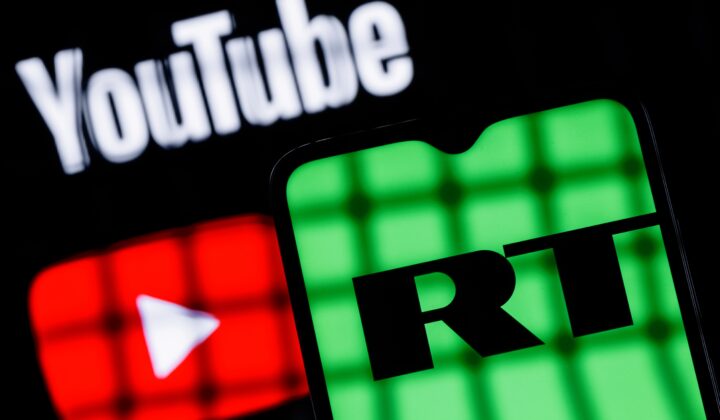As dust from the midterm elections still settles, one thing remains clear: it seems as if Americans live in different realities. Election deniers made up a majority of GOP candidates, and events like the attack on Paul Pelosi by a wild conspiracy theorist force us to remember just how dangerous living with a different set of facts can be.
Usually, conversations about polarization like this draw on the connected ideas of echo chambers and filter bubbles. Echo chambers develop when people only interact with ideas from like-minded people, preventing them from seeing other perspectives. Filter bubbles are the guardrails that social media algorithms and search engines draw around users so that they only interact with opinions they agree with. As the story goes, Americans now live so deeply in echo chambers and filter bubbles that establishing a common basis of facts is nearly impossible.
These ideas are so widely held that challenging echo chambers seems to be the closest thing Elon Musk has offered to a serious explanation for why he purchased Twitter. On October 27, he wrote:
“The reason I acquired Twitter is because it is important to the future of civilization to have a common digital town square, where a wide range of beliefs can be debated in a healthy manner, without resorting to violence. There is currently great danger that social media will splinter into far right wing and far left wing echo chambers that generate more hate and divide our society.”
Yet while the idea that we live in echo chambers has clearly caught the imagination of a polarized nation looking for answers, we’re probably thinking about them all wrong. When social scientists run studies to discern how common echo chambers are and measure their effect, the results consistently downplay their importance and challenge some of the basic assumptions they rely on.
Now, some of these researchers are trying to correct the record. In 2019, professor Axel Bruns wrote a book arguing that all evidence suggests echo chambers are not primarily to blame for polarization and are not nearly as widespread as most people believe. Then in January of 2022, a group of researchers from the Reuters Institute and the University of Oxford published a meta-analysis of scientific literature on echo chambers and filter bubbles, drawing largely the same conclusions.
So what did Bruns and the Reuters Institute group find to be the truth?
1. Social media platforms do not limit your exposure to opposing opinions. If anything, they probably increase it.
If the filter bubble and echo chamber hypothesis were true, people who use social media would encounter less ideological diversity than people who aren’t on the platforms. Studies find, however, that our social media feeds aren’t nearly as averse to showing opposing opinions as we might think.
On platforms like Twitter, hashtags draw in people from all political persuasions, actually encouraging interaction with opposing opinions. If you’re following a trending topic, it’s hard to avoid people who disagree with you. Even on platforms like Facebook which rely on friends and follower networks to build your feed, it’s unlikely that you will only find people consistently sharing articles from outlets with the same partisan lean. While friends and follower networks can lean heavily toward one political party, they are rarely completely devoid of contrasting opinions.
The result is that rather than social media feeds simply affirming a user’s opinions, social media platforms can have a diversifying effect on your news consumption. One study concluded that social media users “encounter a greater diversity of news sources than non-users do.”
As the Reuters meta-analysis points out, it doesn’t actually take much to increase the variety of news someone is consuming, given that most people simply don’t take in news from many sources. A 2021 study found that the median UK citizen accessed two offline news sources and one online news source per week, on average. The average American’s experience probably isn’t terribly different.
2. People who consume partisan news also engage with mainstream news, and they do so more than the average person.
The echo chamber idea often describes media consumption as if it’s zero-sum––by interacting more with partisan news, people are interacting less with mainstream, moderate news. Research studies paint a different picture.
Over the past decade, studies have consistently shown that people who engage with highly partisan news sites also engage with mainstream news, and probably at a higher rate than an average person. A study from 2011 found that the most highly partisan news consumers were more likely to visit the New York Times than a standard internet user. Another study from 2013 concluded that “exposure to highly partisan political information … does not come at the expense of contact with other viewpoints.” And it’s not just Americans. Studies in Sweden, Spain, and the Netherlands have all led researchers to similar conclusions.
People engaging with highly partisan news might spend a lot of time with extremist opinions, but they are more likely than the average person to engage with moderate news. A simple information deficit isn’t a widespread problem.
3. The percent of people that actually live in echo chambers is probably in the single digits.
Since social media platforms often encourage seeing differing political opinions and highly partisan news readers are commonly also moderate news readers, echo chambers are actually quite rare.
The Reuters research group combined estimates from studies of online networks in various countries. In the UK, a 2021 study found that about 2% of people lived in a left-wing echo chamber, and 5% lived in a right-wing echo chamber. A study from Israel found that just 3% of the population lived in an online political echo chamber. Across seven countries, the Reuters researchers estimated that about 5% of internet users are in echo chambers, while in the US it was closer to 10%.
Echo chambers exist, just not for many people. It’s also worth pointing out that there are many more people that do not regularly consume any political news than there are people that live in echo chambers.
4. Showing people with highly partisan views more content from across the political spectrum doesn’t make them less radical.
The fact that echo chambers aren’t the problem many people believe them to be wouldn’t be quite so bad if the most common solution proposed to address them––show people more diverse content––weren’t making the problem worse.
In one 2018 study involving 1,400 people, researchers studied how living in a news echo chamber or consuming news from a variety of sources would affect people’s political opinions. Roughly one half of the participants ended up in news echo chambers, and the other followed news from a randomized assortment of news outlets.
When the study participants returned, the results flipped the echo chambers narrative on its head. Those people that only followed outlets which matched their beliefs were less likely to express radical opinions than those who had to follow a random assortment of outlets. The echo chamber cohort hadn’t become extremist at all.
Another 2018 study came to a similar conclusion. In that case, the researchers had participants follow a Twitter bot that posted from the perspective of a member of the opposite political party. After a month of listening to the Republican bot, Democrats became mildly more liberal. After a month of listening to the Democratic bot, Republicans became significantly more conservative. In our polarized environment, engaging more with the other side can actually make us more partisan, not less.
Replacing the Echo Chamber Myth
That the echo chamber hypothesis doesn’t hold up to scrutiny isn’t exactly a win for our democracy. If echo chambers were the problem, then it would be easy enough to tweak social media algorithms to display a wider variety of opinions. But simply displaying a spectrum of views isn’t the anti-extremist panacea it’s made out to be.
We have to contend with the fact that most people who engage with highly partisan news aren’t cut off from the mainstream. They engage with that too, and then decide that it’s dead wrong. When it comes to walking back our polarized political environment, there are no quick fixes. The answers will likely be found in some mix of limiting the rapid spread of misinformation and increasing digital literacy without hurting free debate. But so long as we focus on echo chambers, we’re distracting ourselves from finding those solutions.





